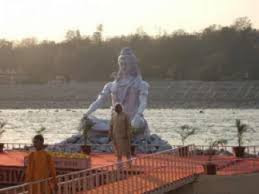Yoga of Synthesis - 6.

Part-6. Such a Yogi has all-round development. The Yoga of Synthesis will help you to attain God-realization quickly. Upanishads, Gita and all other scriptures speak of this Yoga. Therefore, O Mokshapriya, practice this unique Yoga of Synthesis and attain Self-realization quickly. Here is my little song of the Yoga of Synthesis, for your daily practice: 1. Eat a little, drink a little 2. Talk a little, sleep a little 3. Mix a little, move a little 4. Serve a little, rest a little 5. Work a little, relax a little 6. Study a little, worship a little 7. Do Asana a little, Pranayama a little 8. Reflect a little, meditate a little 9. Do Japa a little, do Kirtan a little 10. Write Mantra a little, have Satsang a little 11. Serve, Love, Give, Purify, Meditate, Realize 12. Be good, Do good; Be kind, Be compassionate 13. Enquire 'Who am I ?', 14. Know the Self and be Free END. Next : The Qualifications for a Student of Yoga Swami Sivana...






















